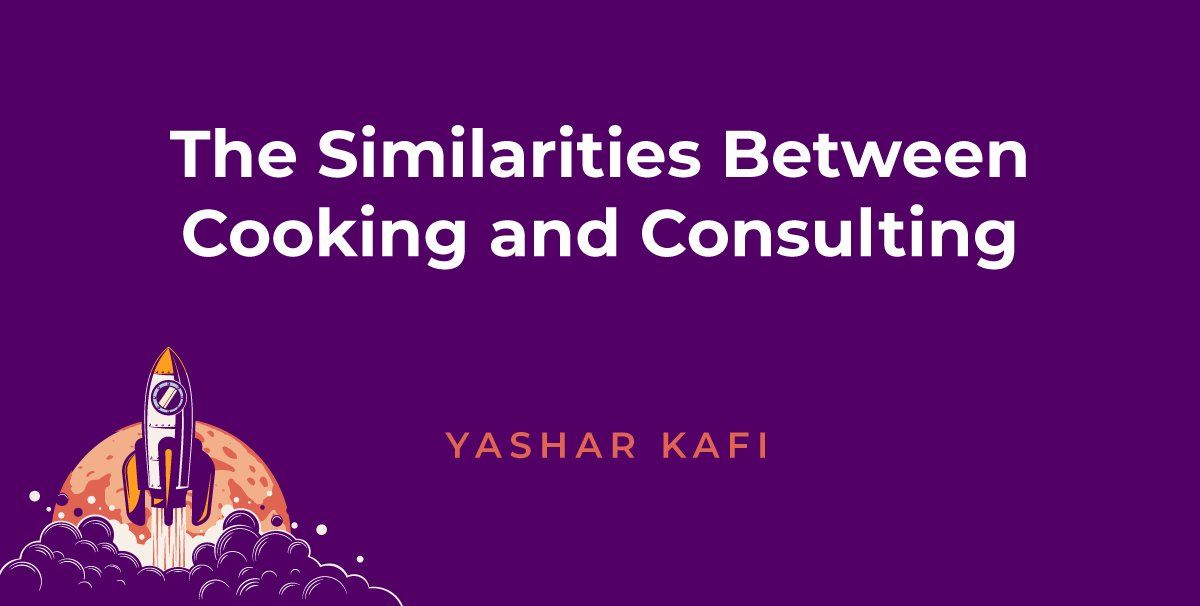The Similarities Between Cooking and Consulting
You may be surprised to learn that there are a few similarities between cooking and consulting. Let’s look at just how they mirror one another and how you can apply lessons from a Michelin-worthy chef’s kitchen to learn the recipe for being a consultant worthy of Top Chef status.
What Are the Characteristics of a Great Consultant?
I wrote an article about the key characteristics of a great consultant, which mainly discusses that your consultant should be an optimizer, a visionary, and a proactive leader. A triple threat, if you will.
As long as consultants have these characteristics, I’m confident they could run a kitchen. That doesn’t mean they can cook, however.
How Does Running a Restaurant Prepare You for Consulting?
From my experience working in a kitchen, I have seen what skills go into running a restaurant. So, how exactly does this apply to or compare with consulting?
For one thing, preparation is essential. In preparing a kitchen for a busy night, prep is critical—and it takes a village. Similarly, when you are consulting, you need your village to help you prep: an analyst to get all the client information and some of your line managers to pull out some details, start building relationships, and more.
In both cases, your “village” helps you disseminate information. We see this in the kitchen, where it is about having the knowledge and being able to say, “We need tomatoes! We need stock! We need onions, mushrooms, etc. for our bouillabaisse that we know is always the most popular dish on our menu for tonight.”
Key Mistakes in Kitchens and Consulting
Like in any consulting firm or high-class kitchen, it’s not always smooth sailing. A few mistakes are often made in both positions—so avoid them if possible.
For instance, you have likely heard about having too many cooks in the kitchen. When you become a consultant, you’re like that head chef trying to drive an effort forward.
If you start taking too much input from different chefs or consultants, what do you get in the end? Far too often, it’s chaos and confusion—both in the kitchen and around the conference table.
To avoid this situation (too many people contributing differing or conflicting ideas to a project), incorporate strategies for creating a collaborative work environment.
Top Skills from the Kitchen to Consulting
A collaborative environment is what you need to thrive in the kitchen and consulting field. These are the top skills required in both roles to earn Michelin-worthy star status.
Trust (for Your Team)
I will keep this one short because it is really simple: Trust your team. They will execute when you empower them.
Strategy
Strategy is huge for both consultants and master chefs. After all, you want your outcome to wow your clients and diners. As I alluded to before, prep is essential, but so is your village that makes it all happen collectively.
There is a hierarchy in both the kitchen and consulting, where you have specific roles and tasks that correspond with those roles. For the kitchen, this starts at the top with the head chef, the sous chefs, the line cooks, the preparers, and right down to the dishwasher. In consulting, you have analysts and line managers who bring their skills to the table to keep everything in this structure moving forward smoothly.
Creativity vs. Following a Process
Creativity in the kitchen—and innovation and open-minded thinking in consulting—can go a long way. But the fact remains that the method you use to get there should involve some solid, standardized process. If you work the process, you’ll be able to execute on dishes or projects.
Ready to start cooking up something good? We can help. To learn more, reach out to the AMP team.




